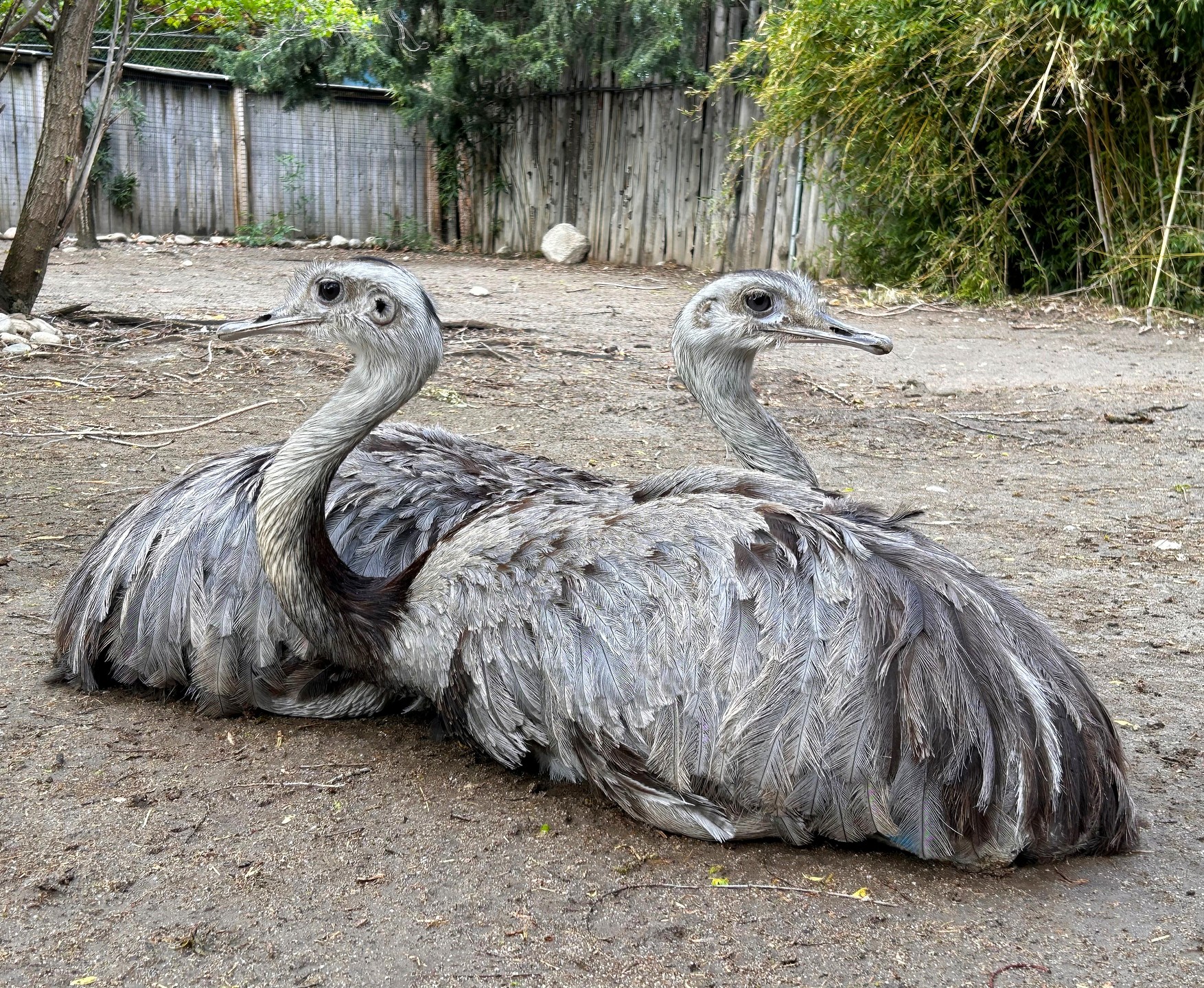- Greater rheas’ biology and behavioral characteristics
- The significance of zoos in education and conservation efforts
- Wildlife management and the role of zookeepers
- Threats to greater rheas and conservation actions
- Celebrating Do and Re, the greater Rhea sisters, and their role in wildlife advocacy
Greater rheas, scientifically known as Rhea americana, reign as the largest birds native to the South American continent. With their impressive stature and grace, these birds symbolize the diversity and adaptability of wildlife in the Americas. Having celebrated their 9th hatch-day, the greater Rhea sisters Do, and Re captivates visitors with their majestic presence and play a pivotal role in their sanctuary’s educational outreach and conservation programs.
At birth, greater rheas are anything but the towering figures they grow to be. Starting life as fluffy chicks, they rapidly grow, with their strong legs and fleet-footedness being a remarkable adaptation. Notoriously mistaken for ostriches or emus, greater rheas are distinguished by some unique traits. With three-toed feet and a height that can reach up to 1.5 meters, they carry a natural elegance in their posture and movement. Unlike their African and Australian relatives, greater rheas are known for their grey-brown plumage, which provides excellent camouflage against the vast grasslands and scrublands they inhabit.
A hallmark feature of these birds is their incredible speed. They can reach 40 miles per hour, a vital adaptation for a flightless bird that relies on quickness to evade predators. Their powerful legs are not just for speed; they can also deliver formidable kicks to deter threats. Interestingly, greater rheas also possess large wings, which, despite being useless for flight, are important in balance and maneuverability as they sprint across the terrain.
Zoos play a crucial role in educating the public about the wonders and needs of wildlife. Institutions like the one caring for Do and Re create immersive experiences that foster a connection between humans and animals. Through such interactions, visitors gain a deeper appreciation for the diversity of life and the importance of its preservation. One can learn about how greater rheas form intricate social structures, how males are the primary caregivers for their young, incubating eggs and guiding newborns, and how these behaviors are examples of the complex social behaviors in the wild.
Zookeepers like Nicole, who cares for Do and Re, are integral to the management and well-being of captive animals. Their daily tasks involve providing proper diets, creating enrichment activities to stimulate the animals mentally and physically, and monitoring health and behavior for signs of distress or illness. These animal care professionals are the nexus between zoo residents and visitors, offering insights into the lives of the creatures under their care while advocating for their needs and conservation.
Regrettably, greater rheas face several threats in the wild, including habitat loss due to agriculture, hunting for their feathers and meat, and the illegal pet trade. These challenges necessitate proactive conservation efforts. In-situ programs work to protect and restore natural habitats, and sustainable practices are promoted in local communities. Ex-situ conservation programs, like the one Do and Re participates in, aim to maintain genetically diverse populations in captivity to safeguard against species decline.
Do and Re, in their captive environment, illustrate their species’ beauty while serving as ambassadors for wildlife conservation. Each visitor who encounters these greater Rhea sisters has the opportunity to become a voice for wildlife preservation, spurred by the encounter with these impressive birds. As Do and Re continue to thrive under the care of zookeepers, they embody the success of targeted conservation efforts and serve as a beacon of hope for the future of their species.
Through comprehensive education programs and interactive encounters, zoos bolster the public’s knowledge and passion for wildlife conservation. Zoos also contribute to biology, behavior, and breeding research, essential for developing effective conservation strategies. The story of Do and Re emphasizes the symbiosis between humans and wildlife, how each can benefit from the other, with the ultimate goal of safeguarding biodiversity for future generations.
Observing such harmony between nature and human stewardship at the home of Do and Re can revitalize one’s commitment to environmental causes. Celebrating the hatch-day of such captivating creatures symbolizes not just a victory for one species but the potential for a broader impact on global conservation efforts. With every visitor they inspire, Do and Retake another step towards a future where every rhea can run swiftly across open lands, unencumbered by the threat of extinction.
*****
Source Description
Happy 9th hatch-day to greater rhea sisters Do and Re.
The largest native bird in the Americas, greater rheas are flightless, but can run up to 40 miles per hour. Just don’t confuse them with their relatives: the ostrich or the emu!
📷: Zookeeper Nicole

